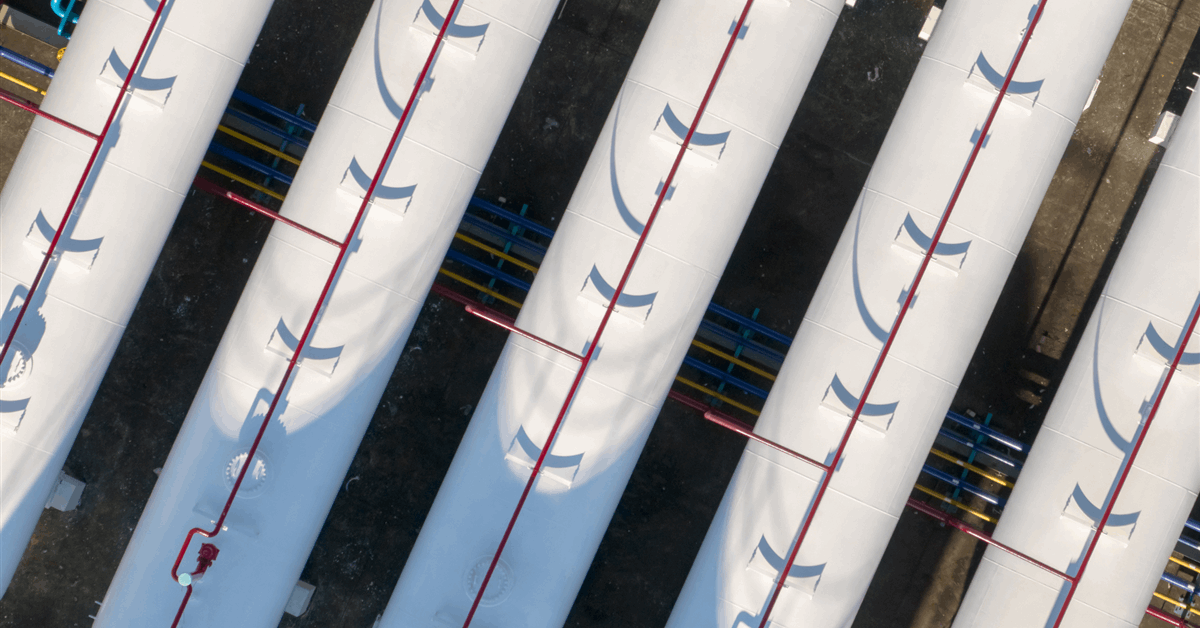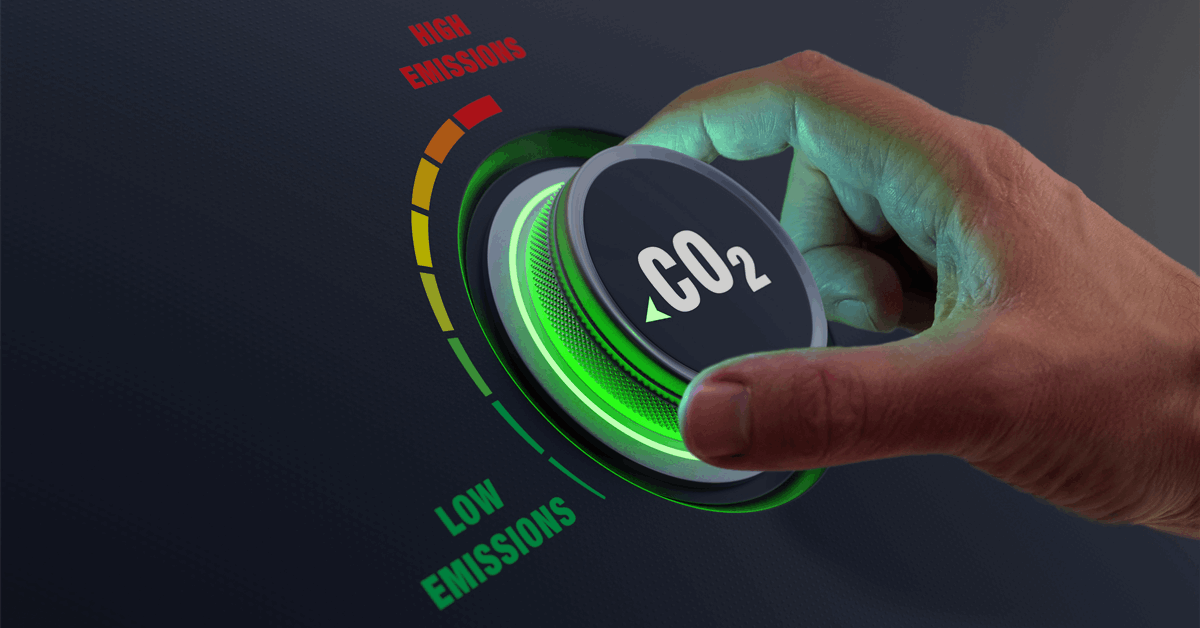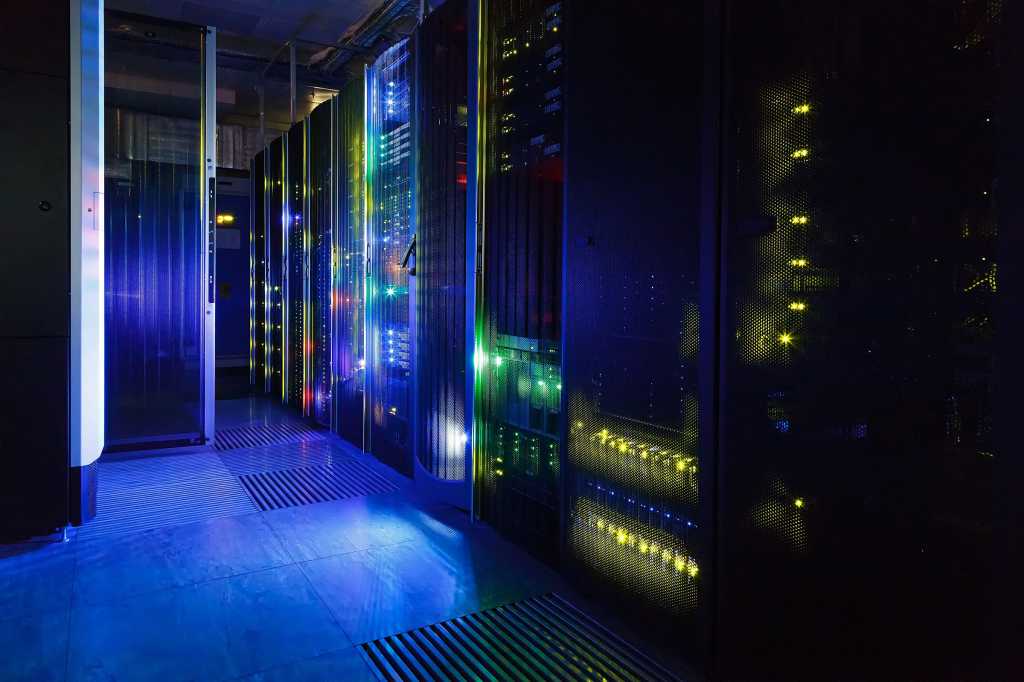
Opinion
By asking key questions, regulators can distinguish between fruitful and wasteful hydrogen projects. And by taking a holistic view and engaging with others, they can bring stability to the industry.
Published July 2, 2025
By
Dan Esposito and Mike O’Boyle
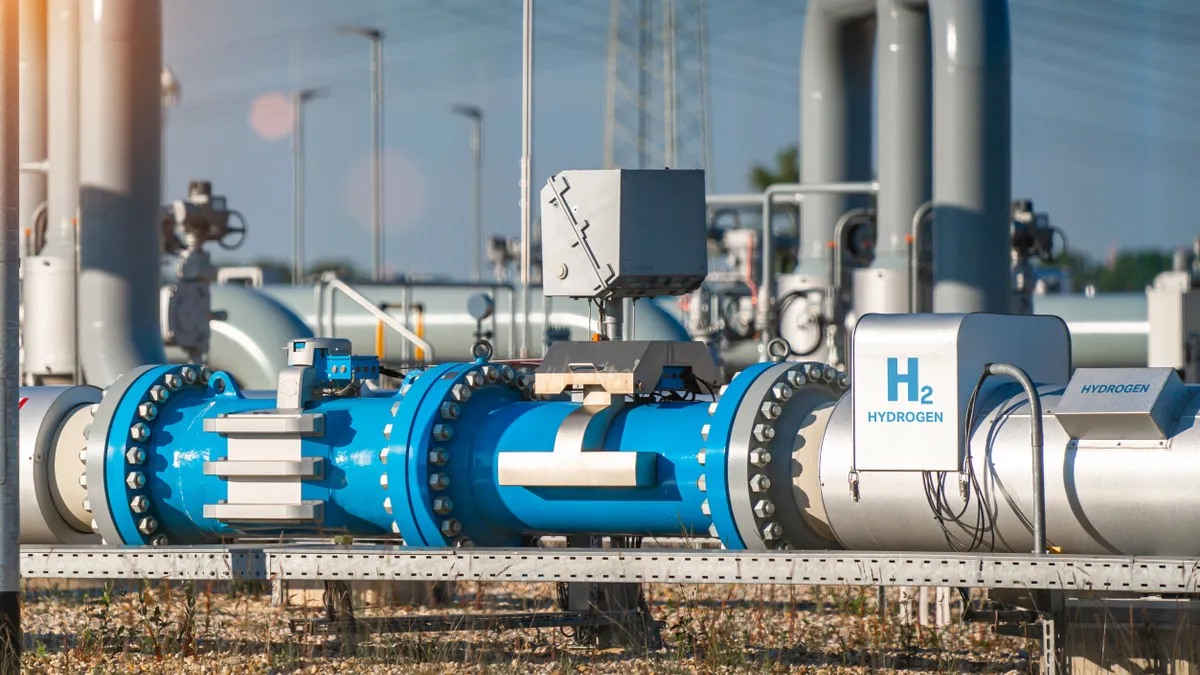
audioundwerbung via Getty Images
Dan Esposito is manager, fuels and chemicals, and Mike O’Boyle is senior director, electricity, at Energy Innovation.
Congressional Republicans may terminate the 45V Clean Hydrogen Production Tax Credit, the Trump administration is reportedly discussing canceling several Regional Clean Hydrogen Hubs and hydrogen developers are abandoning projects. Yet recent clean hydrogen forecasts suggested rapid near-term growth, with debates raging about where and how to produce and use the molecule.
Energy regulators worldwide will have to ride the hydrogen hype rollercoaster. Hydrogen production implicates electricity load growth and natural gas demand, and electric and gas utilities are eyeing hydrogen for power generation and gas delivery services, respectively. Gas utilities are also exploring retrofitting natural gas infrastructure for hydrogen transport or developing and owning purpose-built hydrogen pipelines.
Energy Innovation and the Regulatory Energy Transition Accelerator convened nearly 80 regulators from 37 jurisdictions to discuss emerging hydrogen challenges and share experiences. This culminated in a new resource aiming to help regulators understand how hydrogen will interact with regulated networks and prepare to assess the prudence of utilities’ hydrogen proposals.
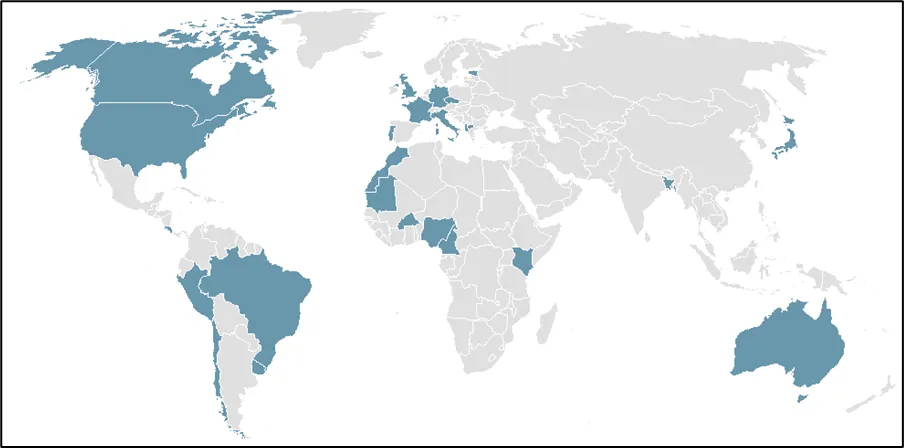
Map of countries with regulators participating in the Energy Innovation – Regulatory Energy Transition Accelerator hydrogen workshops.
Permission granted by Energy Innovation
Regulators already feel tension on hydrogen: moving too quickly risks a bloated rate base and stranded assets, with underinvestment in more cost-effective technologies for achieving utilities’ goals; however, moving too slowly risks arresting innovation, missing policy goals and forgoing opportunities to make utility systems more efficient. But regulators can contend with this uncertainty, taking a holistic view that illuminates least-regrets decisions and helps ensure affordable, reliable and safe energy services.
Uncertainty reigns supreme
Clean hydrogen — a gaseous molecule produced such that it emits relatively little climate pollution — is important for reducing emissions in heavy industry, aviation and marine shipping while also bringing industrial competitiveness and energy security value. Reflecting this understanding, at least 74 countries have released national hydrogen plans.
However, the timing, quantity, location and type of hydrogen production and use face substantial uncertainty. Industry projections differ by hundreds of millions of tons of clean hydrogen — both between forecasting groups and within groups’ year-to-year estimates.
Electric and gas utilities are proposing hydrogen-related investments, such as “hydrogen-ready” power plants or initiatives to blend hydrogen into gas distribution networks. Grid planners are also anticipating hydrogen’s growth alongside other potential large new loads like data centers — for example, an SPP-commissioned study found electrolysis could drive hundreds of terawatt-hours of new load U.S.-wide by 2035.
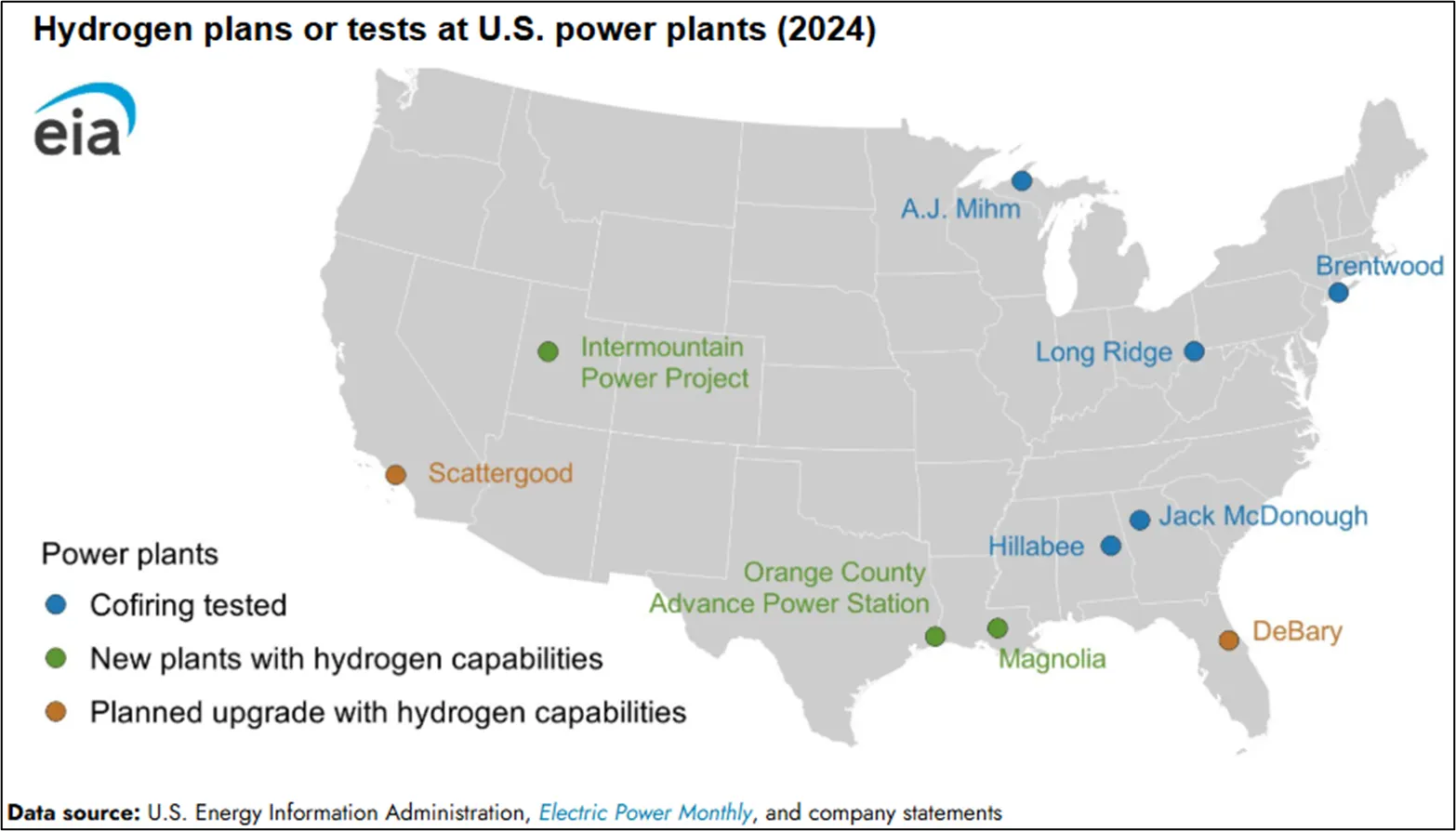
Optional Caption
Untangling this complexity begins with visualizing how hydrogen interacts with the systems over which regulators have decision-making purview, identifying priorities and question sets, and learning from colleagues’ experiences.
Layering hydrogen onto existing energy system regulation
Electric and gas systems have long overlapped. For example, power plants can use natural gas to generate electricity, and homeowners can choose between natural gas and electric appliances. This intersection is increasingly apparent, driving a need for integrated electric and gas system planning.
Hydrogen adds another layer of complexity. It can stand alone in refineries and petrochemical parks, or it can interact with the electric and gas systems, whether independently or together.
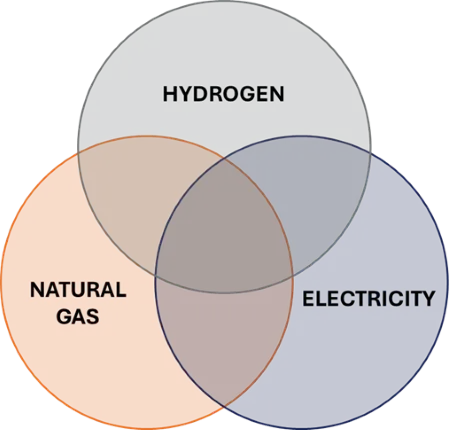
Electric and gas systems have long overlapped. Hydrogen adds an additional layer of complexity that calls for greater coordination and holistic planning.
Permission granted by Energy Innovation
For electric utilities, electrolytic hydrogen production influences electricity demand. If regulators set rates that encourage the deployment of flexible, price-responsive electrolyzer technologies, these systems can benefit the grid by ramping up only to consume excess renewable generation. However, regulators should be wary of overestimating electrolysis loads in demand forecasts as well as subsidies that may incentivize electrolyzer operations that induce higher fossil fuel power generation.
Hydrogen can also serve seasonal or multi-annual energy storage needs, with electrolyzers producing hydrogen using excess clean generation and turbines or fuel cells reconverting hydrogen to electricity during wind lulls or drought years. However, regulators should consider how nitrogen oxide pollution from high-temperature hydrogen combustion could constrain development. They should also treat utility proposals for “hydrogen-ready” power plants skeptically absent clear-eyed analysis of if and when on-demand, cost-competitive hydrogen might be available, lest customers pay for facilities that never deliver their promised benefits.
For gas utilities, methane-based hydrogen production can increase natural gas demand, affecting gas prices for retail customers. They may also seek to blend hydrogen into their delivery systems. However, regulators in at least Massachusetts and Colorado have rejected hydrogen blending, concluding it is unlikely to cost-effectively support states’ emissions reduction targets — decisions aligned with overwhelming independent research.
Regulators may also face questions about regulatory oversight of hydrogen infrastructure and their role in ensuring safe network operations. For example, to what degree should regulated utilities be permitted to build, own, and operate hydrogen production facilities and pipelines, such as with SoCalGas’ Angeles Link proposal? With whom should regulators coordinate to ensure the safety of natural gas pipelines and end-use equipment, given hydrogen’s risks as a tiny, highly flammable, fast-burning molecule?
Zooming out to better assess hydrogen dynamics
Regulators may have narrow jurisdictional lenses, but by widening their aperture of awareness, they can better assess how hydrogen will likely develop over decades. This can inform judgments about the prudence of projects over which they have decision-making purview. We identify four areas in which regulators would benefit from greater understanding and coordination with relevant authorities.
First, government policy goals can jumpstart clean hydrogen development, but regulators should consider where ambition may outpace technoeconomic realities or policies that may distort energy markets. Second, emissions accounting schemes determine what qualifies as “clean,” and these frameworks heavily influence hydrogen production dynamics. Third, hydrogen’s production and combustion can cause local air pollution, and environmental regulations may limit projects’ viability. Fourth, hydrogen production’s water requirements may impede development in water-constrained regions.
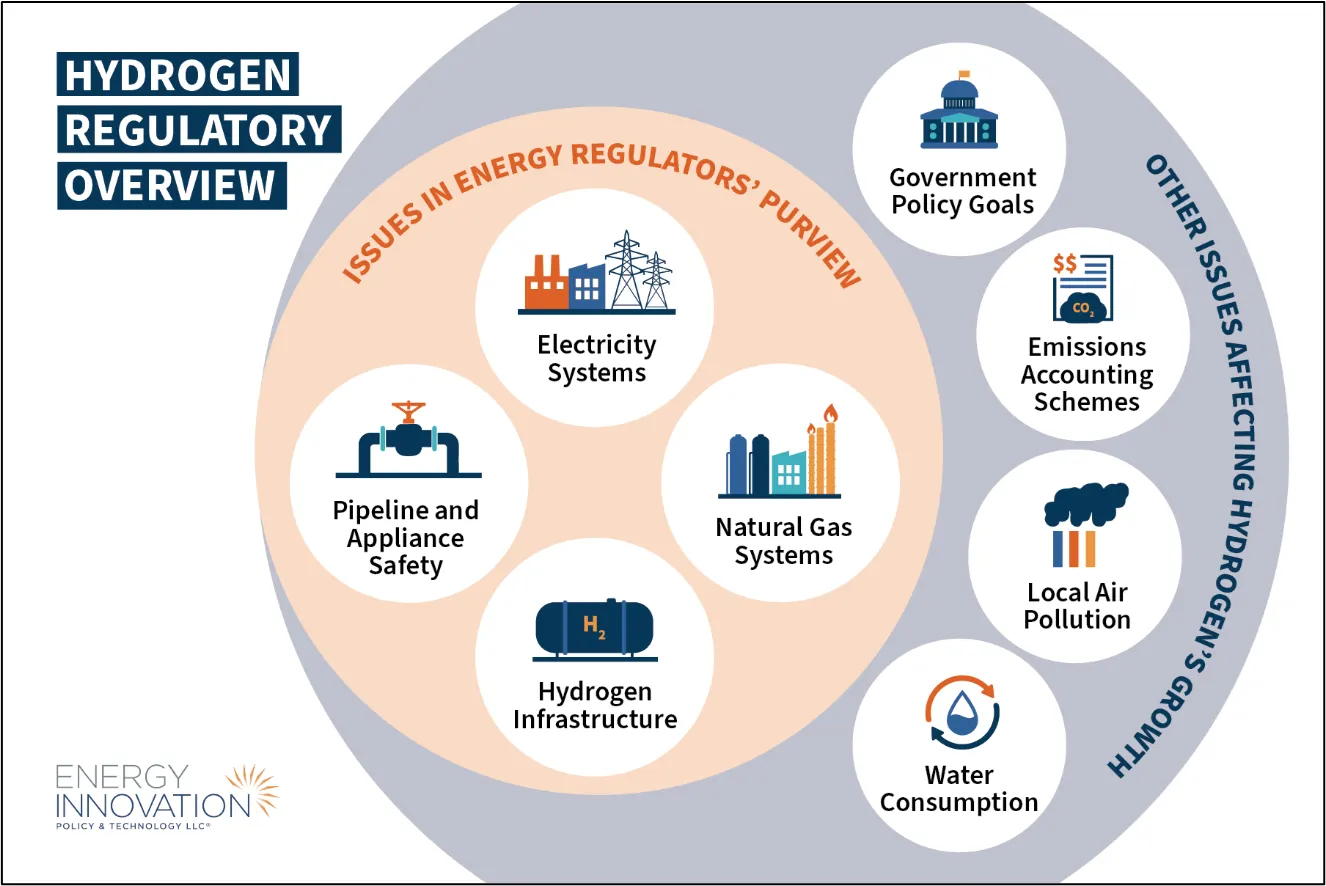
While most energy regulators only have jurisdiction over the “issues in energy regulators’ purview,” they can make smarter decisions on these issues by widening their aperture of awareness to consider—and coordinate with other agencies and authorities on—these “other issues affecting hydrogen’s growth” that may fall outside of their direct decision-making power.
Permission granted by Energy Innovation
Awareness of these issues has its own benefits, but regulators can go further by sharing their technical expertise with relevant decision-makers. For example, regulators can proactively coordinate with policymakers to arrive at more informed goals that balance hydrogen industry growth with energy affordability.
Protecting customers while enabling innovation
Clean hydrogen goals, incentives, and proposed investments are in constant flux. But regulators can take steps to confidently navigate these turbulent waters. Regulators need not reject all hydrogen proposals, nor should they grant hydrogen public funding merely for “innovation.”
By asking the right questions — early and comprehensively — regulators can distinguish between fruitful and wasteful hydrogen investments. And by taking a holistic view and engaging with other authorities, they can bring stability and clarity to an uncertainty-plagued industry. The path exists to guide smart hydrogen industry development while ensuring affordable, reliable, and safe energy services.
<!– –>






